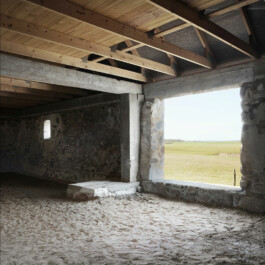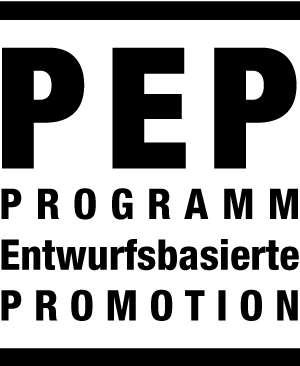
Es gibt Stellen im Entwurf, an denen sich die Idee eingedenk aller analogen und digitalen Entwurfswerkzeuge mit der Verpflichtung, dem Stand der Technik entsprechend zu bauen, mit planungsrechtlichen, bauphysikalischen und schall- und brandschutztechnischen Anforderungen und vor allem mit strukturell-konstruktiven Fragen überlagern und zu einem scheinbar unlösbaren Problem verdichten. Von Jan Turnovský 1987 in seinem Essay ‚Die Poetik eines Mauervorsprungs‘ als der Bruchstelle zwischen dem Willensmoment des Konzeptes und dem Widerstandsmoment des empirischen Materials bezeichnet, zeigt sich das gezielte Aufsuchen dieser Stellen im Entwurfsprozess als Präokkupation im Werk. Eine conditio sine qua non dieser Betrachtung ist explizit ein nicht lineares Verständnis der konstruktiven ‚Durcharbeitung durch die Maßstäbe‘; im Gegenteil es erfolgt eine permanente Überschreibung aller Parameter im Dienste der Idee. Die Forderung aus der Lehre von Adolf Krischanitz, ein Entwurf müsse einen künstlerischen Subtext transportieren, um Architektur zu sein, ist das Legat für das Übermaß an Arbeit, welches diese Form der Praxis mit sich bringt. Gelingt es, die seismische Stelle - möglicherweise fast beiläufig - zu lösen, stellt sich eine imaginäre Reduktion von Komplexität ein, welche über sich selbst hinaus weisen kann und den kostbaren Moment zwischen dem Nachdenken über Architektur und dem alltäglichen Gebrauch der Dinge manifestiert. Betrachtet man das Heraufbeschwören dieser Bruchstellen im Entwurfs- und Konstruktionsprozess als Methode, so wird das enorme Potential zu scheitern ebenso deutlich wie das große architektonische Potential. In Unterscheidung zum Konzept des pars pro toto rückt die Untersuchung anhand ausgewählter Präzisionsbauten respektive nicht das Detail zum kohärenten Entwurf in das Zentrum der Betrachtung, sondern die Frage, welche architektonischen Lösungen und Lösungsstrategien sich aus dem gebauten Werk anhand der seismischen Stellen destillieren lassen.Diese Herangehensweise enthält darüber hinaus die Möglichkeit, speziell ausgehend von den im Prozess zu ortenden offenen Fragen, virulente konstruktive Themen als zukünftige Felder für das ‚Entwerfende Forschen’ zu heben. Hiermit begeben sich das Reflektieren und das Kontextualisieren des im Entstehen begriffenen Werkes in spezifische Bedingungen, insbesondere da sich die diskursive und die entwerfende Praxis parallel zu einander entwickeln.
There are particular junctures in the design process where the idea – bearing in mind all analogue and digital design tools and the obligation to build according to the newest state of technology – is confronted with the requirements of planning law, building physics and thermal, noise and fire protection, and above all with structural-constructive questions, thus condensing into a seemingly unsolvable problem. Described by Jan Turnovský in 1987 in The Poetics of a Wall Projection as the breaking point between the intention of the concept and the resistance of the empirical material, the deliberate search for these points in the design process reveals itself as a preoccupation within the body of work. An inevitable condition of this observation would be an explicitly non-linear understanding of the constructive ‘working through the range of scales’. Instead, however, all the parameters are permanently transcribed in the service of the idea. The demand encapsulated in the teachings of Adolf Krischanitz that a design must transport an artistic subtext in order to be architecture is a legacy that explains the excessive amount of work that this form of practice entails. If one succeeds in solving this seismic point – potentially quasi in passing – the result is an imaginary reduction of complexity, which in turn can point beyond itself and manifest the precious moment between thinking about architecture and the everyday use of things. If one considers the evocation of these fault lines in the design and construction process as a method, the enormous potential for failure and the great architectural potential become equally clear. In distinction to the concept of pars pro toto, the focus in this investigation, rooted in an examination of selected high-precision buildings, lies less in the role played by details in coherent design, and instead concentrates on the question which architectural solutions and problem-solving strategies can be distilled from the built work based on these seismic points. This approach also includes the potential discovery of transferable constructive themes as future fields of ‘explorative design’, starting specifically with the open questions identified within the design and construction process itself. This places the reflection and contextualization of the work in progress in a specific conditional framework, especially since the discursive and designing practices develop in parallel to each other.

Es gibt Stellen im Entwurf, an denen sich die Idee eingedenk aller analogen und digitalen Entwurfswerkzeuge mit der Verpflichtung, dem Stand der Technik entsprechend zu bauen, mit planungsrechtlichen, bauphysikalischen und schall- und brandschutztechnischen Anforderungen und vor allem mit strukturell-konstruktiven Fragen überlagern und zu einem scheinbar unlösbaren Problem verdichten. Von Jan Turnovský 1987 in seinem Essay ‚Die Poetik eines Mauervorsprungs‘ als der Bruchstelle zwischen dem Willensmoment des Konzeptes und dem Widerstandsmoment des empirischen Materials bezeichnet, zeigt sich das gezielte Aufsuchen dieser Stellen im Entwurfsprozess als Präokkupation im Werk. Eine conditio sine qua non dieser Betrachtung ist explizit ein nicht lineares Verständnis der konstruktiven ‚Durcharbeitung durch die Maßstäbe‘; im Gegenteil es erfolgt eine permanente Überschreibung aller Parameter im Dienste der Idee. Die Forderung aus der Lehre von Adolf Krischanitz, ein Entwurf müsse einen künstlerischen Subtext transportieren, um Architektur zu sein, ist das Legat für das Übermaß an Arbeit, welches diese Form der Praxis mit sich bringt. Gelingt es, die seismische Stelle - möglicherweise fast beiläufig - zu lösen, stellt sich eine imaginäre Reduktion von Komplexität ein, welche über sich selbst hinaus weisen kann und den kostbaren Moment zwischen dem Nachdenken über Architektur und dem alltäglichen Gebrauch der Dinge manifestiert. Betrachtet man das Heraufbeschwören dieser Bruchstellen im Entwurfs- und Konstruktionsprozess als Methode, so wird das enorme Potential zu scheitern ebenso deutlich wie das große architektonische Potential. In Unterscheidung zum Konzept des pars pro toto rückt die Untersuchung anhand ausgewählter Präzisionsbauten respektive nicht das Detail zum kohärenten Entwurf in das Zentrum der Betrachtung, sondern die Frage, welche architektonischen Lösungen und Lösungsstrategien sich aus dem gebauten Werk anhand der seismischen Stellen destillieren lassen.Diese Herangehensweise enthält darüber hinaus die Möglichkeit, speziell ausgehend von den im Prozess zu ortenden offenen Fragen, virulente konstruktive Themen als zukünftige Felder für das ‚Entwerfende Forschen’ zu heben. Hiermit begeben sich das Reflektieren und das Kontextualisieren des im Entstehen begriffenen Werkes in spezifische Bedingungen, insbesondere da sich die diskursive und die entwerfende Praxis parallel zu einander entwickeln.
There are particular junctures in the design process where the idea – bearing in mind all analogue and digital design tools and the obligation to build according to the newest state of technology – is confronted with the requirements of planning law, building physics and thermal, noise and fire protection, and above all with structural-constructive questions, thus condensing into a seemingly unsolvable problem. Described by Jan Turnovský in 1987 in The Poetics of a Wall Projection as the breaking point between the intention of the concept and the resistance of the empirical material, the deliberate search for these points in the design process reveals itself as a preoccupation within the body of work. An inevitable condition of this observation would be an explicitly non-linear understanding of the constructive ‘working through the range of scales’. Instead, however, all the parameters are permanently transcribed in the service of the idea. The demand encapsulated in the teachings of Adolf Krischanitz that a design must transport an artistic subtext in order to be architecture is a legacy that explains the excessive amount of work that this form of practice entails. If one succeeds in solving this seismic point – potentially quasi in passing – the result is an imaginary reduction of complexity, which in turn can point beyond itself and manifest the precious moment between thinking about architecture and the everyday use of things. If one considers the evocation of these fault lines in the design and construction process as a method, the enormous potential for failure and the great architectural potential become equally clear. In distinction to the concept of pars pro toto, the focus in this investigation, rooted in an examination of selected high-precision buildings, lies less in the role played by details in coherent design, and instead concentrates on the question which architectural solutions and problem-solving strategies can be distilled from the built work based on these seismic points. This approach also includes the potential discovery of transferable constructive themes as future fields of ‘explorative design’, starting specifically with the open questions identified within the design and construction process itself. This places the reflection and contextualization of the work in progress in a specific conditional framework, especially since the discursive and designing practices develop in parallel to each other.
